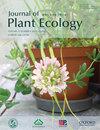水稻与水生动物共育促进水稻生态系统生态强化研究综述
IF 3.9
2区 环境科学与生态学
Q2 ECOLOGY
引用次数: 1
摘要
物种共育可以增加农业生物多样性,因此是农业的生态强化措施。水稻-水生动物共育是一种物种共育,已得到广泛的实践和研究。在这里,我们回顾了最近关于水稻-水生动物共培养系统的研究和文献定量分析的结果。我们解决了三个问题:(i)通过水稻-水生动物共育,在减少化学物质投入的情况下,能否保持或提高水稻产量和土壤肥力?(ii)水生动物如何有益于水稻生态系统?(iii)如何实施共养以强化生态?基于已发表论文的荟萃分析表明,与水稻单一栽培相比,水稻-水生动物共育提高了水稻产量、土壤有机碳和总氮,减少了害虫和杂草。研究还表明,与水稻单一栽培相比,水稻-水生动物共同栽培减少了农药和化肥的施用。水稻植物为水生动物提供了有利的环境,导致了野外动物的大量活动。水生动物反过来帮助清除水稻害虫,并充当影响土壤条件的生态工程师,土壤条件有利于水稻的生长。水生动物促进营养循环,促进水稻和水生动物之间营养的互补利用,从而提高了共同养殖中的营养利用效率。为了产生有益的结果,如何在水稻和水生动物之间建立兼容的伙伴关系,以及共同培养系统的兼容培养策略是关键。研究水生动物和水稻品种的哪些特征最适合创建生产性和可持续的共同养殖系统可能是未来的重点之一。本文章由计算机程序翻译,如有差异,请以英文原文为准。
Coculturing rice with aquatic animals promotes ecological intensification of paddy ecosystem: a review
Species coculture can increase agro-biodiversity and therefore constitutes an ecological intensification measure for agriculture. Rice-aquatic animal coculture, one type of species coculture, has been practiced and researched widely. Here, we review recent studies and present results of a quantitative analysis of literature on rice–aquatic animal coculture systems. We address three questions: (i) can rice yield and soil fertility be maintained or increased with less chemical input through rice-aquatic animal coculture? (ii) how do aquatic animals benefit the paddy ecosystem? (iii) how can coculture be implemented for ecological intensification? Meta-analysis based on published papers showed that rice-aquatic animal cocultures increased rice yield, soil organic carbon, and total nitrogen and decreased insect pests and weeds compared to rice monocultures. Studies also showed that rice-aquatic animal cocultures reduced pesticide and fertilizer application compared to rice monocultures. Rice plants provide a beneficial environment for aquatic animals, leading to high animal activities in the field. Aquatic animals, in turn, help remove rice pests and act as ecological engineers that affect soil conditions, which favor the growth of rice plants. Aquatic animals promote nutrient cycling and the complementary use of nutrients between rice and aquatic animals, which enhances nutrient-use efficiency in the coculture. To generate beneficial outcomes, how to develop compatible partnerships between rice and aquatic animals, and compatible culturing strategies for coculture systems are the key points. Investigating which traits of aquatic animals and rice varieties could best match to create productive and sustainable coculture systems could be one of the future focuses.
求助全文
通过发布文献求助,成功后即可免费获取论文全文。
去求助
来源期刊

Journal of Plant Ecology
生物-植物科学
CiteScore
4.60
自引率
18.50%
发文量
134
审稿时长
3 months
期刊介绍:
Journal of Plant Ecology (JPE) serves as an important medium for ecologists to present research findings and discuss challenging issues in the broad field of plants and their interactions with biotic and abiotic environment. The JPE will cover all aspects of plant ecology, including plant ecophysiology, population ecology, community ecology, ecosystem ecology and landscape ecology as well as conservation ecology, evolutionary ecology, and theoretical ecology.
 求助内容:
求助内容: 应助结果提醒方式:
应助结果提醒方式:


